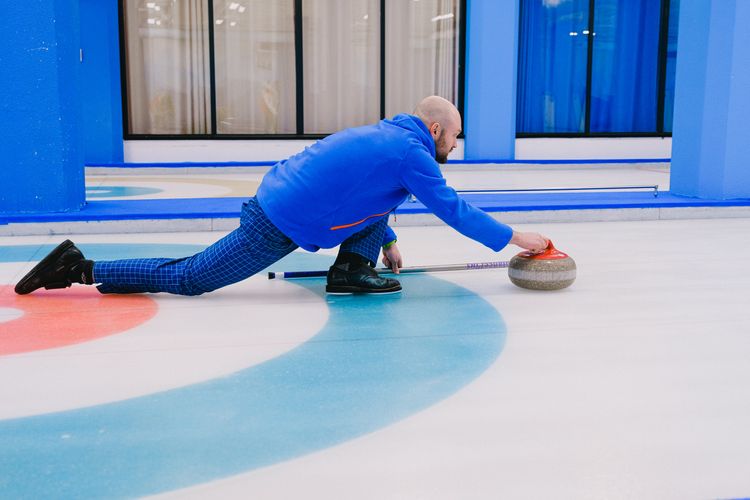🦀 PT Crab Issue 91 - What you don’t know can hurt others.

This week, we’re talking about RED-S and OSD. King Crab supporters got two more articles this week, one about DITA, and another on the ACAPT. Become a supporter for those articles, access to the archive, and more. It’s an acronym heavy edition of PT Crab and it’s on right now.
This week's edition of PT Crab is brought to you by GenoPalate. Details are below.

Let’s dive in!
Tell me what you don’t know about RED-S
The Gist - This won’t apply directly to you since it’s a survey on physios who work in the UK, but it’s really interesting information about the amount of knowledge out there about RED-S. Relative energy deficiency in sport is common in the aerobic sports so these researchers tried to learn what physios who cover rowing know about it, and it’s not enough. According to a 2005 paper, 32% of female college athletes use extreme weight loss techniques and 70% believe they’re harmless, so we need more information and education out there.
The researchers interviewed 12 physios and found five key themes. In general, the physios were insufficiently educated about Red-S (only 5 of the 12 knew about it), they helped athletes prioritize performance over health, they referred to other providers for the symptoms rather than recognizing their roles, and they inadequately educated the athletes on safety. I know that we DPTs have more education in general than UK physios, but if you work with young athletes, especially women, consider this a wakeup call. According to one rower they interviewed: “No one with a medical qualification who has treated me for some of these symptoms has ever given it the term RED-S or even explained the severity of my symptoms.”
Tell Me More - They also interviewed the rowers involved and found that every one of the 13 had at least one Red-S symptom but only one had received what they saw as appropriate management. Management of Red-S requires a diverse, multi-disciplinary team but we as physiotherapists often spend the most time with the patients, so it’s important to be familiar with its symptoms. A 2020 review provided screening guidelines and questions that the physios in this study could have been using, had they known.
The words of physiotherapist Frank from the study really sum things up: “It should be in undergrad degrees, for physios but also doctors and people working with the athletes ... all national governing bodies should make guidelines like protocols we should follow ... presentations for athletes ... a website that explains how to make weight, symptoms to look out for.” Yes they should.
Paper? Right here.
Wanna support PT Crab for free? Just click on this ad from our sponsor. It’s a huge help.
Also, check out the sponsor while you’re there. It’s quite an interesting approach to nutrition management.
Can a DNA Test Really Tell You How to Eat?
GenoPalate brings you a DNA-Personalized Health Test - Better nutrition based on your genetic results. Start eating for your genes! Optimize your diet and health. Money back guarantee. Start living a healthier, happier life today. Learn more now.

Maybe Osgood-Schlatter Isn’t About Growth
The Gist - This case-control study of 127 football players between 12 and 18 wanted to see just what factors lined up with Osgood-Schlatter and they were quite surprised (and so was I). They took flexibility, strength, ultrasound imaging, growth and history of Sever’s disease into account and found that only Sever’s could predict the likelihood of contracting OSD. Throughout the course of the study, one in six of the players had symptoms consistent with OSD, but 80% of them were able to continue participating in full team training and competition. Overall, 68% of people who had Sever’s previously contracted OSD, though no clear pathophysiological explanation for the correlation was found. And for a refresher, Sever’s is common between the ages of 8 and 12, while OSD usually comes it at 10-15.
Tell Me More - When I was a kid, I had Osgood-Schlatter and played through it as well. The only participation restriction it cast on me was an inability to kneel in church. In my 12 year old, mind, not a huge loss. It seems that this is a similar experience to others who have the condition, with 80% playing on through it. The overall prevalence in the population was 17%, btw, with a peak at 15 years of age.
Outside of what we can learn from this, it’s important to note that the specific forces involved in football are not necessarily common to other sports, so it’s possible these results can’t be generalized. The researchers didn’t measure external load or exposure (e.g. play time), so the study is limited that far, but it still has some interesting facts.
Paper? Gotcha.
And that’s our week! Do share PT Crab as always. I thank you for doing so. And if you don’t want ads, become a supporter! It’s cheap and a huge help. And if you don’t mind ads, click here to go to our sponsor’s website. It lets them know that PT Crab gets them clicks and helps us get more sponsors. A win-win! Thanks!
Have a great afternoon,
Luke
|
|






Comments
Want to leave a comment and discuss this with your fellow PTs? Join PT Crab and get summarized PT research in your inbox, every week.